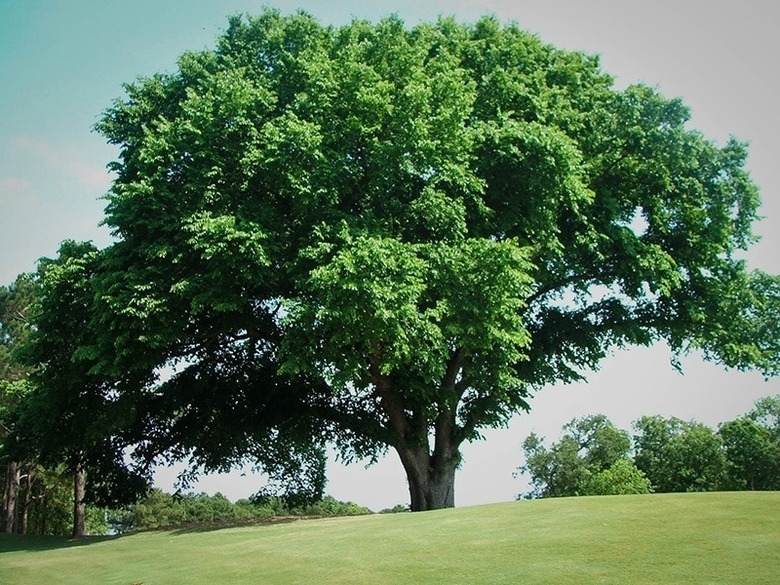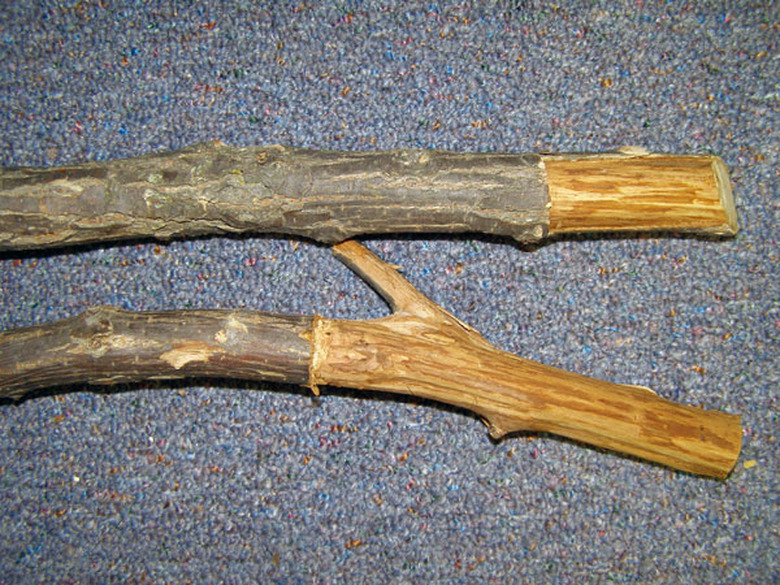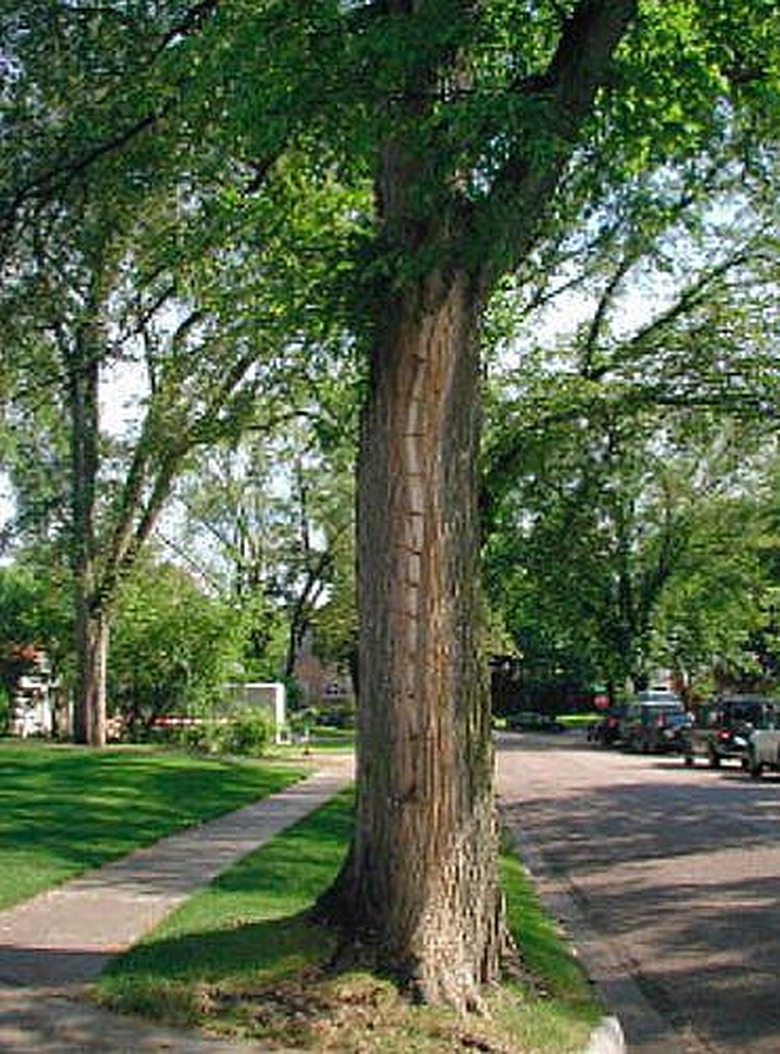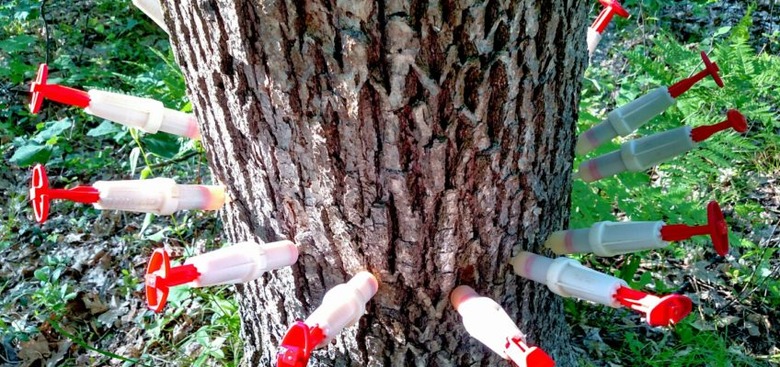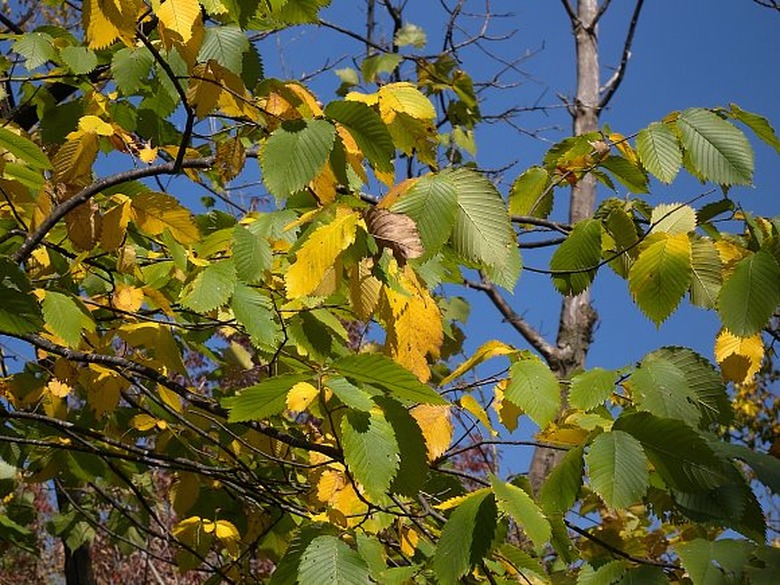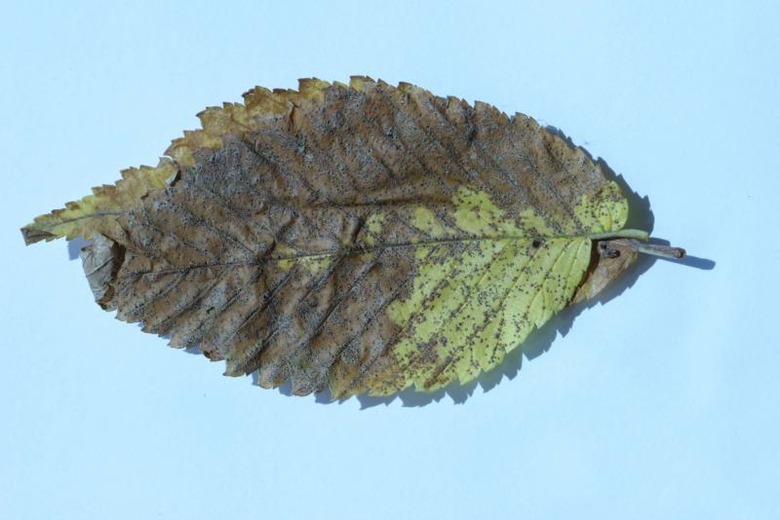What Kills Elm Trees?
Elm trees (Ulmus spp.) were once an everyday sight along sidewalks and roadways in North America, The most common was Ulmus americana, also known as the American or white elm. The arrival of a virulent strain of Dutch elm disease (DED) in New England in the early 1900s had a devastating effect on the elm population. By 1989, it had spread throughout the northern United States and southern Canada and reduced the elm population by 75 percent. The disease had a similar effect on the elm population in Great Britain, Holland and the rest of Europe.
Today, elms are making a comeback, partly because of the development of disease-resistant cultivars and the conservation measures undertaken by various communities across the country. Dutch elm disease is still a concern, but even if your favorite elm has contracted it, you may still be able to save the tree.
Dutch elm disease isn't the only threat that elms face. Elm phloem necrosis, also called elm yellows, is caused by a bacteria-like organism called a phytoplasma carried by leafhoppers and spittlebugs. It is untreatable and can kill a mature tree in a year or two. Fortunately, it is not as virulent or widespread as DED, which is a fungus spread by elm bark beetles. Elm trees are also susceptible to various types of root rot, which are fungal infections that are also untreatable and fatal. Leaf scorch and leaf spot, which are caused by bacteria and fungi, aren't treatable either, but they usually don't kill the tree.
Recognizing and Treating Dutch Elm Disease
Recognizing and Treating Dutch Elm Disease
When infected with the fungus that causes DED, the tree responds by secreting defense compounds that collect in the sapwood just under the bark. These compounds cause streaking that you can see by cutting a window through the bark with a hammer and chisel. You may also notice tunnels in the sapwood caused by the elm bark beetles that carry the disease. Because this compound prevents the flow of nutrients, the leaves at the end of a branch wilt and die, a condition called flagging.
If the flagging and streaking are confined to one or more branches, the tree can often be saved by cutting off the affected branches at the trunk. The branches must then be burned or otherwise disposed of. If you find streaking on the main branch, this may be accompanied by flagging in the topmost center of the tree. This is a more serious condition, but you may still be able to save the tree using a procedure called tracing.
Cut back the bark in a narrow strip to expose all the stained sapwood and continue cutting to expose an area 10 feet beyond the stained area in both directions. Exposure to the atmosphere kills the fungus, some of which is probably growing beyond the stained wood. Once you've done this, you simply have to wait and see if the tree recovers.
Chemical treatments consist primarily of injecting a fungicide into the lower trunk of an affected tree. You typically drill 1/8-inch holes at 3- or 4-inch intervals and inject a fungicide such as Propiconazole 14.3. As long as the tree still has green leaves, meaning that sap is still circulating, the fungicide will travel through the vascular system and inoculate the tree. This treatment is most effective after a good rain or a deep watering. The effects of the chemical are temporary, so a diseased tree may need more than one treatment.
Dealing with Elm Yellows
Dealing with Elm Yellows
Elm yellows is a systemic disease that affects the whole tree, and while an infected tree may survive for two or three years, it will gradually wilt and die. Nothing can be done to save it, and once the disease has been diagnosed, the best course of action is to cut the tree down and burn it to prevent the spread of the disease.
In the early stages, the symptoms of elm yellows resemble those of DED. At first, the yellowing may affect only a single branch, and if you peel back the bark, you may notice discoloration that resembles the staining caused by the DED fungus. If you remove a small piece of the inner bark and put it in a sealed jar for 5 minutes, however, you'll notice a characteristic wintergreen odor that is only present in trees infected with the phytoplasma that cause elm yellows.
Elm yellows occurs in five North American elm species, including American elm, winged elm, cedar elm, slippery elm and September elm. Although you can't save an infected tree, you can prevent infection by regularly spraying healthy trees with insecticides to control the leafhoppers that spread the disease.
If you lose a tree to elm yellows and you want to replace it, consider planting one of the Asian or European strains that are resistant to the disease. They include smooth-leafed elm (U. carpinifolia), Scotch elm (U. glabra), European white elm (U. laevis), Chinese elm (U. parvifolia) and Siberian elm (U. pumila).
Other Types of Elm Diseases
Other Types of Elm Diseases
Elm trees are vulnerable to fungal leaf infections. Spot Anthracnose can affect the leaves or the tree's vascular system, causing light brown spots and wilting on leaves and branches. The fungus overwinters in the bark of the tree and can be controlled by burning dead leaves and spraying the tree with a fungicide. Black leaf spot produces small, slightly raised spots on the leaves and causes the leaves to wilt prematurely. It dies off over the winter, so no control is needed.
A number of fungi can attack the roots of elm trees and cause root rot. These include Ganoderma, Inonotus and Laetiporus root rot. These fungi produce fruiting bodies on the trunks of the tree near the roots, and when these bodies appear, the tree is done for and should be cut down to prevent it from blowing over in the wind.
Leaf scorch can be caused by excessive sunlight or fertilizer, but when it appears on elm trees, it is usually the work of the bacterium Xylella fastidiosa, which is carried by leafhoppers and spittle bugs. It typically affects only one or two branches at first, but it gradually spreads over successive seasons and may affect the entire tree. It doesn't kill the tree, but it weakens it and makes it more attractive to elm bark beetles and ultimately Dutch elm disease. Treating healthy trees with insecticides is the best way to prevent this disease.
